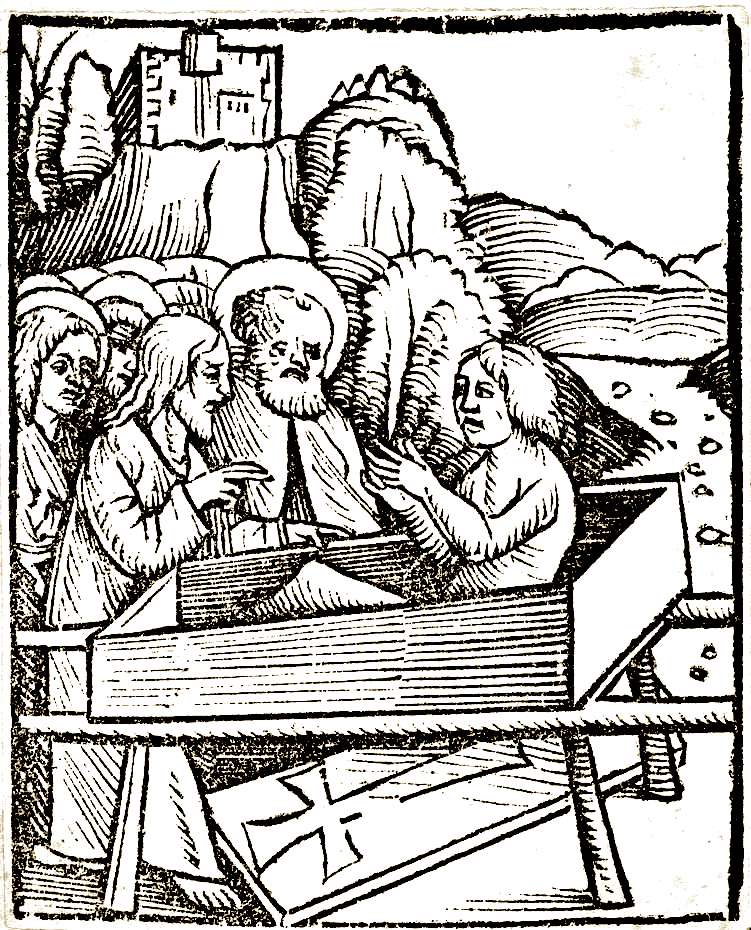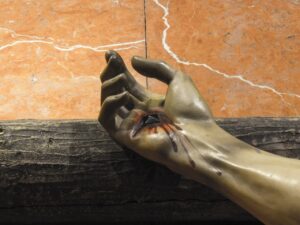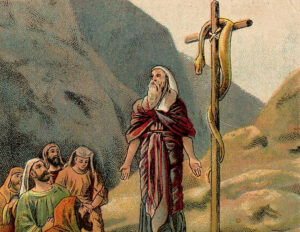The Dead Arose and Came Forth

Our human nature is composed of two basic elements: the physical body—made of a visible, material substance, and the soul—an invisible substance that is immaterial. Our body can’t be disconnected from the soul, so they are therefore associated with each other. God gave us life when He breathed the first breath of life into our material body, and He also gave us an immaterial soul. By the presence of the soul, our body receives life, and when we die, it’s immediately taken away from the body. Then man enters the unseen world beyond through death. This can refer to death of the physical body, but it can also mean death coming from the outward and visible effect of sin.
There were three occasions in the Bible where Jesus exercised the power to raise someone from the dead. All three were different and very meaningful. The first occasion involved Jairus, the ruler of the Capernaum synagogue. His young daughter was dying, so Jairus went on a desperate search for Jesus. When he found Him, Jairus brought Him back to his house into the room where she was lying. Everyone present there had seen her die in the meantime, but Jesus leaned over and tenderly said, “…Damsel, I say unto thee, arise”—and she sat up! (see Mark 5:41). He awakened her from the sleep of death.
Today, there’s still as much need for them to hear His voice calling them to rise from the dead, and to obey it—like Jairus’ daughter did that glorious day long ago!
This is just one example of the tender and compassionate way God handles His children who are dead in trespasses and sins, which causes a great deal of grief and weeping to godly parents. How they wish that Jesus would come and lay His hand on their son or daughter, to raise their loved one from a dead life of sin to everlasting life! Today, there’s still as much need for them to hear His voice calling them to rise from the dead, and to obey it—like Jairus’ daughter did that glorious day long ago!

The next example concerned the son of a widow of Nain. As Jesus and His disciples approached the village where she lived, a funeral procession bearing the dead body of her only son went by, followed by his sad, tearful mother. Jesus made them stop, and then He touched the body, saying to her dead son, “I say unto thee, Arise.” To everyone’s complete amazement, “…he that was dead sat up…and [Jesus] delivered him to his mother” (Luke 7:14-15)!
The third occasion involved the raising of Jesus’ friend, Lazarus. For four days his body laid in the grave after he died. He was therefore beyond any human hope of life. When Jesus arrived, Lazarus’ sister Mary fell at His feet weeping. After Jesus saw her and the other Jews there weeping, it troubled Him and He groaned in His spirit. Then Jesus wept too!
“Jesus therefore again groaning in Himself cometh to the grave. It was an open cave, and a stone lay upon it. Jesus said, Take ye away the stone. Martha, the sister of him that was dead, saith unto him, Lord, by this time he stinketh: for he hath been dead four days. Jesus saith unto her, Said I not unto thee, that, if thou wouldest believe, thou shouldest see the glory of God? Then they took away the stone from the place where the dead was laid. And Jesus lifted up His eyes, and said, Father, I thank Thee that thou hast heard Me. And I knew that Thou hearest Me always: but because of the people which stand by I said it, that they may believe that Thou hast sent Me. And when He thus had spoken, He cried with a loud voice, Lazarus, come forth. And he that was dead came forth…[and] Jesus saith unto them, Loose him, and let him go.”
John 11:38-44
Jesus remained fully aware of His power as God, yet He was willing to involve Himself, with deep sympathy, in the sorrows, pain and suffering of sinful people. And today, He is still moved by the feeling of our afflictions. Jesus comes to us when we are already “dead” in trespasses and sins. If He can physically raise the dead, (and these examples show that He did), then He can also raise us, along with the ones we love, from a dead life of sin and affliction into the glorious life of God!

If you don’t know Jesus Christ as your Savior, the Bible tells us that you are already dead even while you live. When Jesus comes where you are and calls out, “Come forth!”, His tender compassion makes it possible for you to be raised from death to a new life in Him! If you have not yet “come forth,” why not ask Jesus to come today to give you a new life! Please visit our page on the Way to God for more assistance on this life.
[Additional image credits: Featured image (when applicable) Christ raising the daughter of Jairus (Luke 9.41-56). Lithograph by P.H. Eichens after E. Steinle.Wellcome Collection.Public Domain Mark (PDM); Opening image (modified by author) by jhaight from Pixabay]




